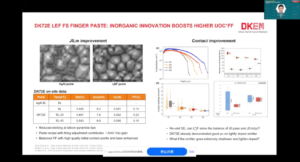- The GENERIS PET can eliminate the undesired losses that originate from cutting cells into half, 3 pieces, or several pieces in the case of shingling
- It can process half cells, multiple cells, and also cell strips (shingle cells) after cutting
- It enables an efficiency increase of up to 1% compared to unpassivated cut cells
- This Machine supports very high throughput and can support several GW of production capacity per year.
SINGULUS TECHNOLOGIES has developed a new process machine called GENERIS PET for the edge passivation of cut cells. The tool is aimed at eliminating the undesired losses that originate from cutting cells into half, 3 pieces, or several pieces in the case of shingling.
For some background, cutting a fully processed cell into half creates defects along the cut corners. These defects act as recombination centers, which can lead to slight performance losses. The Passivated Edge Technology (PET) neutralizes these defects and eliminates the losses. In the process, the passivation layers are precisely applied to the cut edges without undesirable effects on the cell surface. Compared to unpassivated cut cells, the GENERIS PET coating system enables an efficiency increase of up to 1%, according to SINGULUS.
The machine can process half cells, multiple cells, and also cell strips (shingle cells) after cutting. The unique tray design allows processing of thousands of cell parts per tray with high packing density. This inline platform supports very high throughput, while the actual throughput depends on the desired configuration. Taking the example of half cells, Singulus says the tool can support several GW of production capacity per year.
The technology is highly relevant today because, as the size of solar cells increases, cutting cells into at least 2 pieces is becoming inevitable. The edge losses are especially prominent in the case of shingling module technology, which involves cutting cells into several pieces. Therefore, the company is cooperating with shingling production equipment expert M10 to optimize the process.
The text is an excerpt from TaiyangNews New Solar Products Overview H1/2023, which can be downloaded for free here.


